BioInspired Design, Integrative Biology, INTEGBI 160 Evolution
This is a course offered by UC Berkeley’s Integrative Biology department. It addressed an analysis of the patterns and processes of organic evolution. History and philosophy of evolutionary thought; the different lines of evidence and fields of inquiry that bear on the understanding of evolution. The major features and processes of […]
Peacock Feathers Inspire Opal-Like Smart Sensors
An international team of scientists has developed an innovative opal-like material inspired by butterfly wings and peacock feathers. Graphene’s reaction to such conditions include changing color from green to blue when stretched and turning transparent when heated. Regularly interspersing a tiny amount of the “wonder-material” graphene throughout their polymer-based opals unlocked […]
INTEGBI C145 Animal Communication
Communication is central to the lives of most, if not all animals. How and why animals communicate is thus central to understanding the ecology, behavior, neurobiology, and evolution of animal systems. This course will focus on understanding the basic principles driving the communication system of a species, drawing together topics ranging from the physical properties […]
Biomimetic Millisystems Lab: University of California, Berkeley
The Biomimetic Millisystems Lab performs research to improve millirobot capabilities and harness bioinspired principles, as well as aspects of animal manipulation and locomotion of the animals the robots emulate. An example of a recent research project at the Lab is the “OpenRoACH: A Durable Open-Source Hexapedal Platform […]
Trees’ vascular systems are vital to their survival, serving as a delivery mechanism which transport water and other essential mineral nutrients throughout the tree. In a case of bioinspiration, a research team at the Beckman Institute for Advanced Science and Technology sought to mimic vascular systems through a chemical process in foamed polymers. By doing […]
With the implementations of new technologies in creating soft robotics, one significant challenge to their development has been the ability to exert effective forces of control. The following study looks towards the Octopus (Octopus vulgaris), specifically noting how it can manipulate its limbs to crawl and grasp objects. To test the […]
In conjunction with Emory University, researchers from Harvard designed an artificial zebrafish from human cardiac cells. The fish’s swimming pattern resembles a heartbeat, and researchers hope to use this as a stepping stone towards developing an entirely artificial heart. It utilizes two layers of muscle; when one side opens, the other […]
Researcher: Hannah Stewart, Exoskeleton Research and BioInspired Design, UC Berkeley
Hannah Stuart is a researcher in the Mechanical Engineering Department at UC Berkeley. She focuses on improving robot dexterity by designing novel grippers, hands and exoskeletons. She also focuses on bioinspired manipulation strategies. Her interest in robot dexterity comes from its variety in application, which includes remote exploration, search-and-rescue, and human […]
Youtube channel, Deep Look, various biodiscoveries
Deep look is an educational YouTube channel which posts twice a month. Each video is about a different discovery, going in depth into the biomechanics of an organism or other concept. A lot of their videos contain explanations of an interesting aspect of an organism and possible […]
Defective mitochondria — the ‘batteries’ that power the cells of our bodies — could in future be repaired using gene-editing techniques. Scientists have now shown that it is possible to modify the mitochondrial genome in live mice, paving the way for new treatments for incurable mitochondrial disorders.
Bioinspired Soft Microactuators
Soft actuators have the potential of revolutionizing the field of robotics. However, it has been a long-standing challenge to achieve simultaneously: i) miniaturization of soft actuators, ii) high contrast between materials properties at their “on” and “off” states, iii) significant actuation for high-payload mechanical work, and iv) ability to perform diverse […]
News, Lotus Leaf-Inspired Self-Cleaning Bioplastic Created
Inspired by the lotus leaf, researchers have developed a self-cleaning bioplastic that is sturdy, sustainable and compostable. Researchers described the design process for this plastic by explaining: “We designed this new bioplastic with large-scale fabrication in mind, ensuring it was simple to make and could easily be integrated with industrial manufacturing […]
Bio. Discoveries Translated into Devices
Scientists have developed the first fully autonomous biohybrid fish from human stem-cell derived cardiac muscle cells. The artificial fish swims by recreating the muscle contractions of a pumping heart, bringing researchers one step closer to developing a more complex artificial muscular pump and […]
News, Nanofoam discovered in pollen could power cars and save lives
Researchers from the Natural History Museum have “worked alongside a group of materials scientists to investigate the properties of the pollen wall, including its smoothness, flexibility and chemical makeup. These were then compared between modern and fossilised pollen.
The researchers found that the pollen walls contained a significant amount of calcium, […]
How a Kingfisher Inspired a Bullet Train
Like in many cases, the inspiration of a kingfisher bird for Shinkansen trains was rooted in a problem that needed to be solved. People realized that Shinkansen trains were very loud, and although they were fast, this was an issue causing a lot of disturbance. In order […]
News, Diamond structure responsible for starfish strength
Abstract: Beneath a starfish’s skin lies a skeleton made of pebbly growths, called ossicles, which mostly consist of the mineral calcite. Calcite is usually fragile, and even more so when it is porous. But the hole-riddled ossicles of the knobby starfish (Protoreaster nodosus) are strengthened through an […]
The wood skeletons of cholla cacti, subject to spartan desert conditions and hurricane force winds, provide a new template for torsionally resilient biological materials. Selective lignification and macroscopic tubercle pore geometry contribute to density-efficient shear stiffness, while mesoscopic wood fiber straightening, delamination, pore collapse, and fiber pullout provide extrinsic toughening mechanisms. […]
Human-Centered Design, Design Innovation, DESINV 98, UC Berkeley
The Human-Centered Design DeCal is an intro to design theory and practice, focusing on human-centered design and digital interfaces. The class meets weekly to have discussions, invite guest speakers, engage in activities that develop fundamental design skills, work towards a semester-long user research/design project. The course is offered every semester, this […]
National American Association for Environmental Education, American
As a force multiplier for environmental education, NAAEE is committed to promoting excellence in the field and expanding the reach and impact of our collective work. Through signature programs, advocacy, conferences, and other activities, NAAEE works with partners across North America and beyond, to advance our mission of accelerating environmental literacy […]
Bioinspired design views the process of how we learn from Nature as an innovation strategy translating principles of function, performance and aesthetics from biology to human technology. The creative design process is driven by interdisciplinary exchange among engineering, biology, medicine, art, architecture and business. We will learn about the biomimicry design process from original scientific […]
News, Biologists investigate smallest propeller on Earth
Scientists have discovered new information about the tiny propellers used by single-cell organisms called archaea.
Learn more (opens external site)
Jacobs Institute for Design Innovation, UC Berkeley
The Jacobs Institute for Design Innovation is the University of California, Berkeley’s hub for learning and making what is at the intersection between design and technology. They provide a range of opportunities from hands-on team-based learning, to courses to co-curricular offerings. Jacobs strives […]
Paper
It is vital to ramp up crop production dramatically by 2050 due to the increasing global population and demand for food. However, with the climate change projections showing that droughts and heatwaves becoming common in much of the globe, there is a severe threat of a sharp decline in crop yields. […]
This paper talks about how technologies are using insects and human eye inspired designs to make technologies that can effectively navigate to mars. They are using these to be able to observe ephemeral phenomena in mars and be able to predict things like “dust storms in real […]
Fellows work to address real-world challenges, engage with communities to understand needs, and develop viable solutions alongside industry and community partners through design. The Fellowship’s learner-centered approach allows students to co-design their experience from crafting course content to sourcing future projects and collaborators. Two main tracks for fellows are Health and […]
Abstract: Segmented hinges in the long, thin bones of fish fins are critical to the incredible mechanical properties of fins, and this design could inspire improved underwater propulsion systems, new robotic materials and even new aircraft designs.
The topic of flexible robots has come up multiple times in class and thought […]
Abstract: Demand response programs allow consumers to participate in the operation of a smart electric grid by reducing or shifting their energy consumption, helping to match energy consumption with power supply. This article presents a bio-inspired approach for addressing the problem of colocation datacenters participating in demand response programs in a […]
The Universidad de Buenos Aires held a BioDesign competition, amongst which the finalists and top projects are shown at the website link. There are many fascinating, translated projects available to check out, such as this one project called “Myxoglow.” Myxoglow was designed as an alternative to glitter, which is not known […]
Wyss Institute for Biologically Inspired Engineering
The Wyss Institute for Biologically Inspired Engineering is a cross-disciplinary research institute at Harvard University which focuses on developing bioinspired materials and devices for applications in healthcare and sustainability. The Wyss Institute was launched in January 2009 with a $125 million gift to Harvard—at the time, the largest single philanthropic gift […]
Research conducted by Scarangella, Doldan, and Mitov focuses on biologically inspired designs with applications in materials science and potential anti-counterfeiting technology. It was shown that biological patterns found in fruits and insects contain a continuous structure while maintaining discontinuous color patterns.
Looking at insects, Exocuticle and indocuticle processes studied in the […]
Research created a new, bio-inspired, blood-repelling tissue glue that may be a better solution to treating traumatic injuries. The researchers received funding to commercialize their glue and to perform more preclinical studies in animal models from the MIT Deshpande Center. The new adhesive can stick to surfaces even when covered with […]
BioInspired Design Decal, IB198, UC Berkeley
BioDesign DeCal reviews the same bio design process taught in INTEGBI 32, UC Berkeley. Led by students, this Decal serves as an opportunity to further an interest in using biology as a design tool. The design process helps to consistently innovate new ideas while allowing room for students to create novel designs with nature as […]
Paper, Butterfly wing clap explains mystery of flight
The fluttery flight of butterflies has so far been somewhat of a mystery to researchers, given their unusually large and broad wings relative to their body size. Now researchers have studied the aerodynamics of butterflies in a wind tunnel. The results suggest that butterflies use a highly effective clap technique, therefore […]
Paper Abstract: Synthetic carriers such as polymer and lipid particles often struggle to meet clinical expectations. Natural particulates — that range from pathogens to mammalian cells — are therefore worth examining in more depth, as they are highly optimized for their specific functions in vivo and possess features that are often desired in drug delivery […]
News, Kangaroo rat research aims to prepare for future extremes
Geotechnical engineer and assistant professor Idil Akin from Washington State University became fascinated with how kangaroo rats can build burrows which withstand harsh climates for generations. How, with such a simple material like soil, could they make such durable structures that could withstand dry climates, humidity fluctuations, […]
We can learn from the unique structures of shark skin that give it its anti-bacterial property. Without the use of chemicals, anti-biotics or drugs, this innovation may potentially be extremely useful in the case of superbug (drug resistant bacteria) outbreaks. It is the structure of sharkskin’s surfaces […]
Paper, Bio-inspired reversible underwater adhesive
Paper Abstract: The design of smart surfaces with switchable adhesive properties in a wet environment has remained a challenge in adhesion science and materials engineering. Despite intense demands in various industrial applications and exciting progress in mimicking the remarkable wet adhesion through the delicate control of catechol chemistry, polyelectrolyte complex, and […]
International Genetically Engineered Machine (iGEM), Berkeley
iGEM at Berkeley is a for students by students organization focused on developing synthetic and computational biology research projects. It gives members the opportunity to develop experimental design, synthetic biology, and literature search/design skills.
Learn more (opens external site)
“Researchers have successfully used spinach leaves to build functioning human heart tissue, complete with veins that can transport blood.
To tackle a chronic shortage of donor organs, scientists have been working on growing various tissues and even whole organs in the lab. But culturing a bunch of cells is only […]
Undergraduate CRISPR Journal Club, UC Berkeley
Our undergraduate journal club covers CRISPR genome-editing technology, basic research uses, and real-world applications. The seminal papers we’ll discuss reveal core concepts and key experiments, touching on a range of topics, from the foundational development of CRISPR to its use in treating genetic diseases and engineering agriculture.We bring in guest speakers […]
Learn about our two Decals!
 Click here to find out more about our Fall Bioinspired Design Decal and our Spring Bioinspired Design in Action Decal – ALL MAJORS are welcome.
Click here to find out more about our Fall Bioinspired Design Decal and our Spring Bioinspired Design in Action Decal – ALL MAJORS are welcome.Berkeley BioDesign Community
 Click here to learn about the BioD: Bio-Inspired Design @ Berkeley student organization or here to signup for more info.
Click here to learn about the BioD: Bio-Inspired Design @ Berkeley student organization or here to signup for more info.Search
Student Login

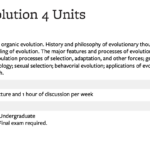
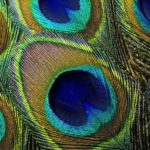
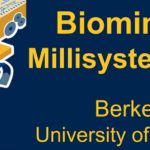
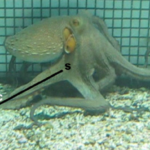
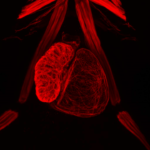


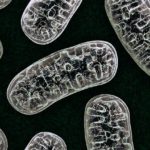
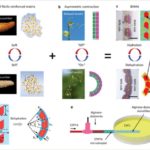
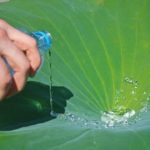
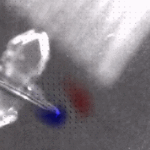
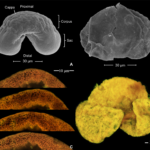
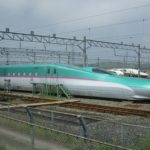
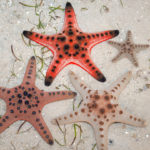
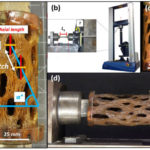


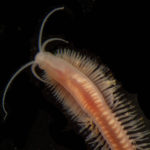

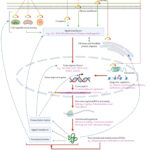
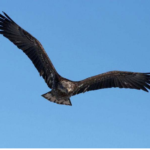
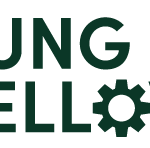
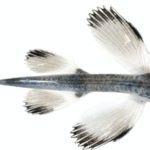
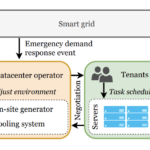
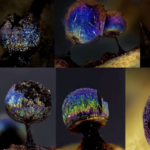
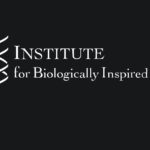
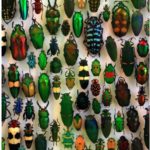
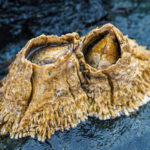
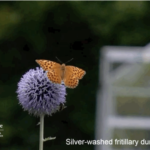



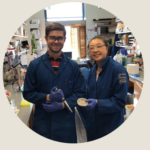
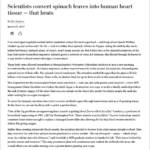



I imagine that the neurological circuits underlying these processes are governed by both 2d spacing maps with their brains as…
to reduce the impact of car accidents, it may be possible to study the force diverting physics of cockroaches to…
you see this type of head-bobbing stability in many avian creatures related to pigeons like chickens. the head ability to…
not like they taught horses how to run! this is an example of convergent evolution where both sea creatures and…
The brain functions in a similar way with neuronal connections. our brains are able to utilize the multiplicity of connections…